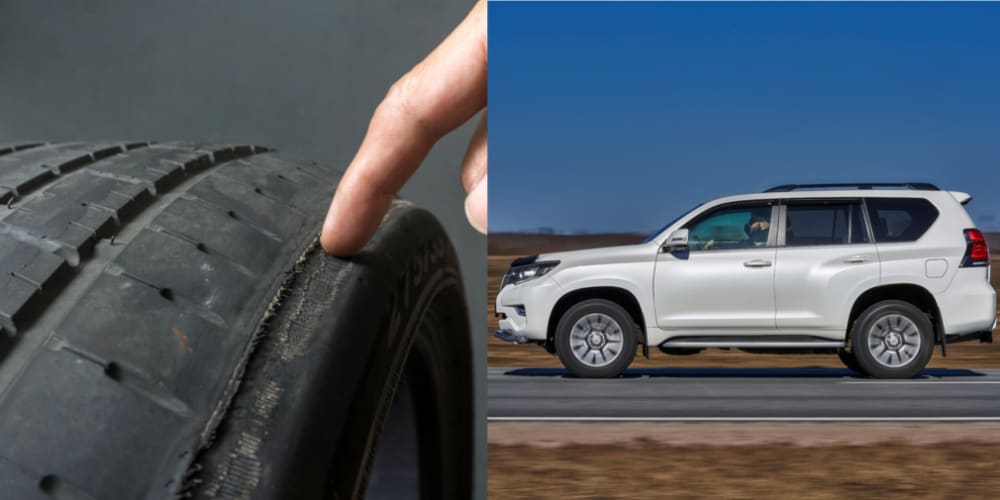
All car owners have experienced steel wires sticking out of one of their car’s tires at some point throughout their driving career.
While all car owners understand, to some extent, that steel wires sticking through their rubber tires is a problem. However, most car owners are unaware of how long their tire will last before a catastrophic failure occurs.
Tires with steel cords showing through their rubber exterior will last a maximum of 100 miles. Tires with steel cords showing present a clear danger to the driver, with experts recommending never to exceed 100 miles after first sighting them. If you can see the steel cords on your tire, replace it.
Car tires with visible steel cords should be replaced as quickly as possible. Once the steel cords are visible through the rubber exterior, the tires are useless, dramatically increasing the likelihood of it experiencing a catastrophic failure.
If you cannot purchase a new tire the same day, put the car’s spare tire on instead. Before you risk driving when the tire’s cords are showing, read this article.
How Long Do Tires With Exposed Cords Last?
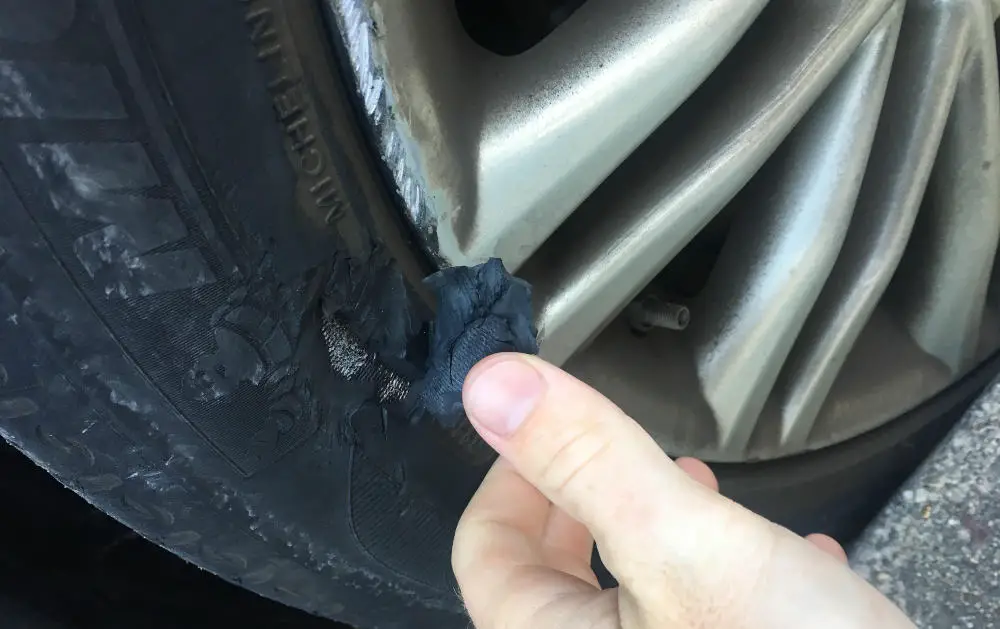
Once you can see steel cords sticking through the rubber exterior of your tire, you should be able to drive for another 100 miles. However, It’s better to be safe than sorry – just replace them as soon as possible.
Drivers who fail to replace their tires after the 100-mile recommended limit expose themselves to unnecessary risk.
Most car owners know that when a tire displays an exposed steel cord, it’s time for it to be replaced as it is far past its sell-by date.
If you continue driving with exposed steel cords, the tire will eventually experience a catastrophic failure, which could lead to serious injury.
Tires with exposed steel cords pose a safety risk as the tire will offer significantly reduced traction and handling on the road. In addition, tires showing steel cords will not allow for their expected performance, leading to a catastrophic failure due to the tire’s inability to effectively dissipate generated heat.
Experts recommend exchanging the tire showing steel cords with the car’s spare if they cannot purchase in time.
However, it should be noted that there is no official safe distance you can travel on a tire showing chords since its sidewall has experienced severe damage. The sidewall’s extensive damage can fail anytime, which is dangerous for you and any other car.
Occasionally, car owners cannot exchange the faulty tire with its spare or purchase a new one. The car should be kept at a low speed and never travel further than 100 miles.
How Safe Is It To Drive With Exposed Steel Cords?
When a tire has exposed steel cords pocking out of its rubber exterior, it cannot offer its usual traction and handling, clearly demonstrating how unsafe it is to continue driving.
While a tire with exposed steel cords does not usually experience catastrophic blowouts immediately, the likelihood of a similar event is drastically increased.
A lack of tire traction or handling capabilities may result in the driver losing control, seriously injuring themselves, or even dying.
The steel cord inside the sidewall of car tires is a critical component of the structure. Steel cords were designed to increase tire stability, strength, and rigidity.
Due to the effectiveness of steel cords, modern tires have an enormous tread area, enhancing their safety and performance.
As a function of a tire’s belt system, steel cords improve general traction, handling, and control while driving at high speeds.
It is, therefore, clear that when cords start showing through the rubber exterior of a car tire, it is unsafe for you and those driving around you.
Why Does My Car Tire Have Exposed Steel Cords?
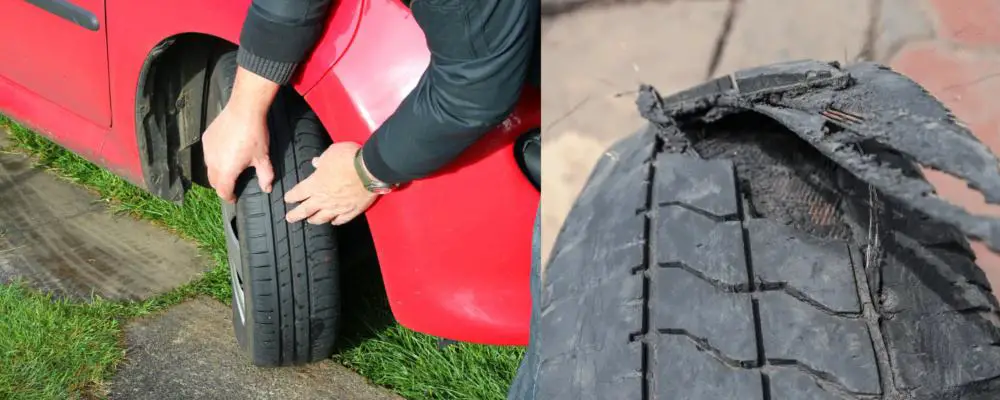
Car tires usually show signs of exposed steel cords when it has been driven excessively and is utterly worn out.
They are designed to last for a sufficient amount of time, with most modern car tires lasting approximately 45.00 miles or 5 years.
There are many reasons a car tire will display signs of its inner steel cords, such as a faulty alignment setup, extended use, inflation issues, and tire pressure inadequacies.
Industry experts agree that a car’s tires are vital to its safety. If a car tire experiences a catastrophic blowout on the road, the potential for it to spin, roll, and uncontrollably swerve is substantially increased.
When a tire bursts, it will automatically pull the steering to one side, which can quickly lead to serious injury or even death.
Faulty Alignment Setups
Faulty alignment setups will result in the tire tilting inwards or outwards. If your tire continuously tilts inwards or outwards, it will increase the wear on one side of the tire.
When the wear on one side of the tire increases faster than the other, your tire will likely start showing its steel cords.
Moreover, faulty alignment setups can cause the tire to slip while running. Tires are designed to roll in a straight line, decreasing their general wear and enabling them to efficiently dissipate heat while driving. If your tire’s toe angle is incorrect, it will start sliding, causing it to display its steel cords.
Extended Use
A car’s tire is usually designed to last for 45.000 miles or 5 years, depending on the manufacturer. After the tire’s lifetime has been exceeded, it will start showing its steel cords and must be replaced.
However, before you rely on the 45.000 miles of 5-year statistic, other factors could influence the safe lifespan of your tire. Occasionally, tires can experience wear faster than predicted due to excessive heat, harsh driving styles, and alignment issues.
Conversely, a tire can last longer than 45.000 miles or 5 years if they are correctly maintained, driven properly, and not continuously exposed to harsh weather conditions. After 10 years, all tires are useless as the rubber exterior will start to disintegrate, exposing the steel cords.
Tire Pressure Inadequacies
Experts agree that it is important to always maintain the correct pressure in your car’s tire. Overinflated and underinflated car tires will produce excess wear, resulting in the steel cords showing.
When a car tire is overinflated, its shape will change. In addition, the tire will become harder and stiffer, meaning that the rubber center will be exposed to the road more than the outer edges.
While overinflated tires will cause it to show its steel cords faster, it will also reduce the tire’s handling, traction, and general performance.
Conversely, underinflated car tires will experience excess wear. If the pressure in your car tire is too low, its outer edges will withstand most of the driving load since the inner edges cannot make contact with the tar below.
Underinflated tires pose the same risk to the car’s tire, driver, and other cars as overinflated tires, demonstrating the importance of always maintaining the correct pressure.
Will Tires Showing Cords Experience Blowouts?
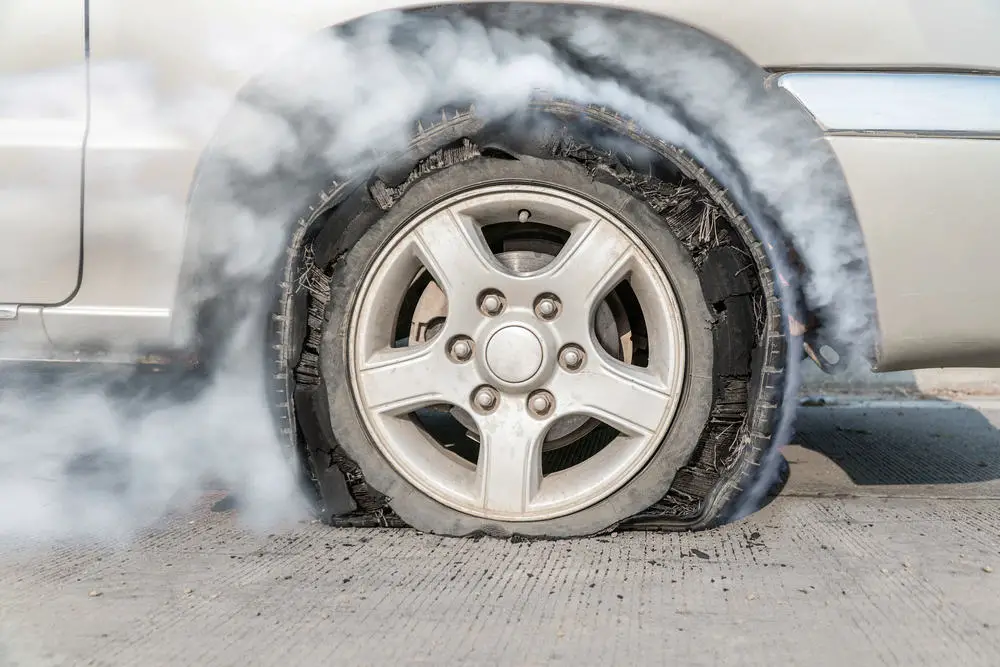
If your car’s tire has recently started showing its steel cords, at risk of experiencing a catastrophic blowout is significantly enhanced.
Under normal circumstances, a car tire with exposed steel cords should not immediately blow out and can last up to 100 miles before being replaced.
However, the probability of the tire experiencing a severe blowout at dangerously high speeds is increased as it cannot effectively dissipate the heat generated while driving.
While tires showing steel cords should not immediately experience a blowout, they could pop without warning, meaning they should not be risked unless it’s a short driving distance.
Can I Fix A Tire With Exposed Steel Cords?
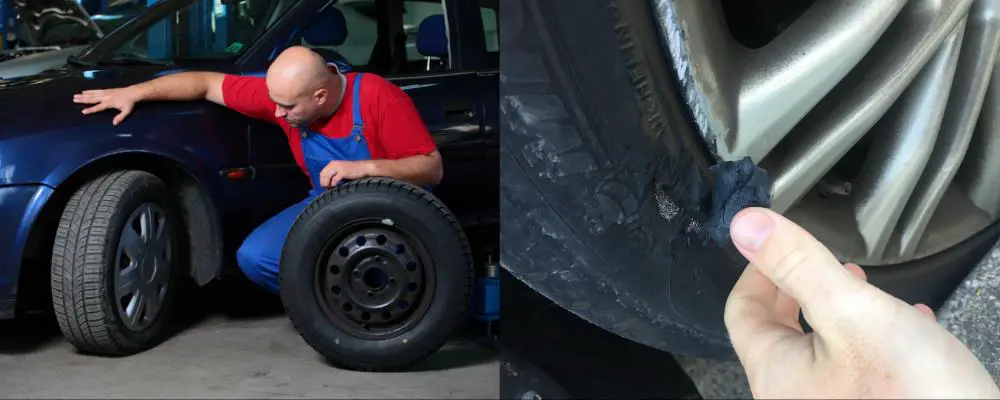
There is no official way to fix a tire showing its inner steel cords. Once the tire’s steel cords are exposed, it has exceeded its lifespan and should be exchanged with its spare immediately.
It is known that the steel cords, located in the sidewall of a rubber car tire, are a critical component of the tire’s structure, strength, and safety.
The steel cords should never be visible through the car’s rubber tire. Industry experts recommend replacing the car’s tire before the steel cords become visible.
In some American states, it is illegal to drive your car if any of its tires are showing their steel cords. Failure to adhere to the law will result in a substantial fine or the car being impounded.
While it may be illegal in some states, the risks posed by car tires with exposed steel cords are severe and should be avoided if possible.
It is unfortunate when your car tire is worn out, as it usually requires a hefty amount of money to replace. However, an unplanned expense is more desirable than severe injury or death.
In theory, a car’s tire can be repaired when its steel cords are exposed, although it is not recommended and is deemed illegal in most American states.
Conclusion
Car tires showing their inner steel cords can last, on average, 100 miles. After the tire with exposed steel cords has traveled more than 100 miles, the likelihood of it experiencing a catastrophic failure is significantly enhanced.
Even with advancements in tubeless tire technology since the 1970s, visible cords indicate a tire is beyond its safe lifespan and should be replaced as soon as possible. Despite potential short-term use, the risk of tire failure makes driving on such tires exceedingly dangerous.
Once your car tire shows its inner steel cords enhance it with the spare and purchase a new one as soon as possible.
